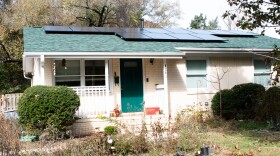-
Federal solar energy tax credits expire at the end of the year, but most solar installers’ queues have already filled through December. One local program gives Mecklenburg County residents a shot at a discount solar installation to help beat rising costs.
-
Last year, the number of jobs in North Carolina’s economy grew by about 1%. But growth in clean energy employment outpaced other sectors, according to a new report.
-
Federal lawmakers passed new regulations requiring U.S.-sourced and -manufactured solar panels for commercial projects seeking to get tax credits, making demand for domestic panels skyrocket.
-
The Southern Environmental Law Center plans to bring an upcoming Duke Energy program before the North Carolina Court of Appeals. The program, called Clean Energy Impact, is supposed to allow companies and individuals to buy energy certificates to support North Carolina’s clean energy transition.
-
Australia mines more lithium than any other country, but most of that lithium is refined in China. Countries such as Australia and the U.S. are looking to refine more lithium at home, and North Carolina is well-positioned to benefit.
-
North Carolina is still waiting on millions in reimbursements from the Department of Homeland Security for hurricane recovery. The Center for Disaster Philanthropy awarded $6.8 million in grants to organizations in western North Carolina supporting small-business development and housing recovery.
-
Duke Energy filed its 2025 Carbon Plan Wednesday morning. Seismic shifts in federal energy policy over the last year have left a mark on the utility’s approach to clean energy.
-
According to the Center for Biological Diversity, which petitioned the service to protect the snake, the southern hognose lives in the coastal plains of Florida, Georgia and the Carolinas, but they already have disappeared completely from Alabama and Mississippi.
-
The EPA announced in March that it was reevaluating its air quality standard for fine-particulate matter, also called soot. This sparked concern for Mecklenburg County Commissioner Elaine Powell during Tuesday’s county environmental stewardship meeting.
-
The Trump administration has massively cut spending on environmental initiatives in North Carolina, costing the state millions in grants for flood resiliency, clean energy and climate research.
Play Live Radio
Next Up:
0:00
0:00
Available On Air Stations










